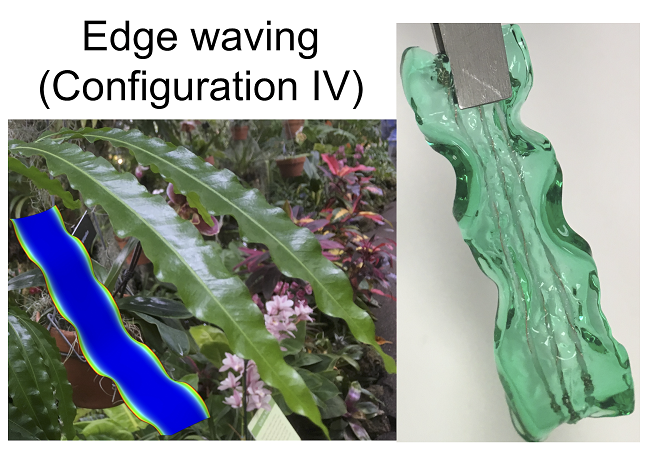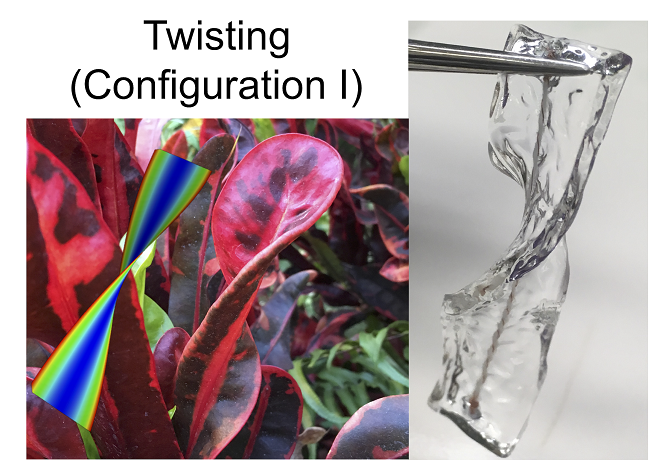Mechanical regulation of shape formation in plant leaves and flower petals
How leaves and petals take shape


A study suggests how mechanical forces influence the shapes of plant leaves and flower petals. The genetic and biomolecular mechanisms that give rise to complex 3D shapes in plant organs have been widely studied, but the role of biomechanical factors is unclear. K. Jimmy Hsia, Subra Suresh, Changjin Huang, and colleagues combined quantitative analyses of live plants with computational simulations to elucidate how mechanical stress and deformation influence plant leaf morphology. Within a leaf, growth strain, defined as the differential change in length between the center stem and a segment parallel to the stem, increased according to a power-law distribution from the center stem to the edge. Two parameters—the value of the power-law exponent that defines the strain profile and the maximum strain value—determined the leaf morphology in growth simulations. The authors constructed a phase diagram illustrating how each of four common leaf geometries—twisting, helical twisting, saddle bending, and edge waving—are associated with specific combinations of the parameters. By manipulation of the two key parameters, the authors reproduced the geometries in a hydrogel, the formation of which mimics plant growth. The results help unravel shape formation in plant organs and suggest ways to generate bioinspired structures in soft materials, according to the authors.
For more info on the news PNAS







